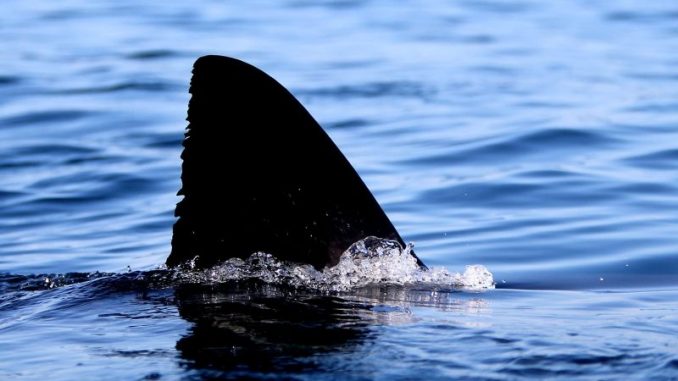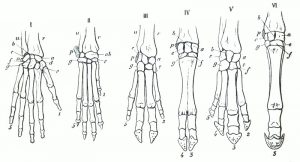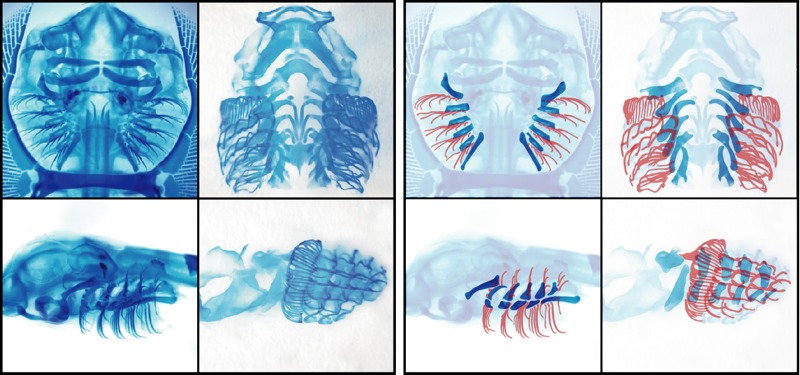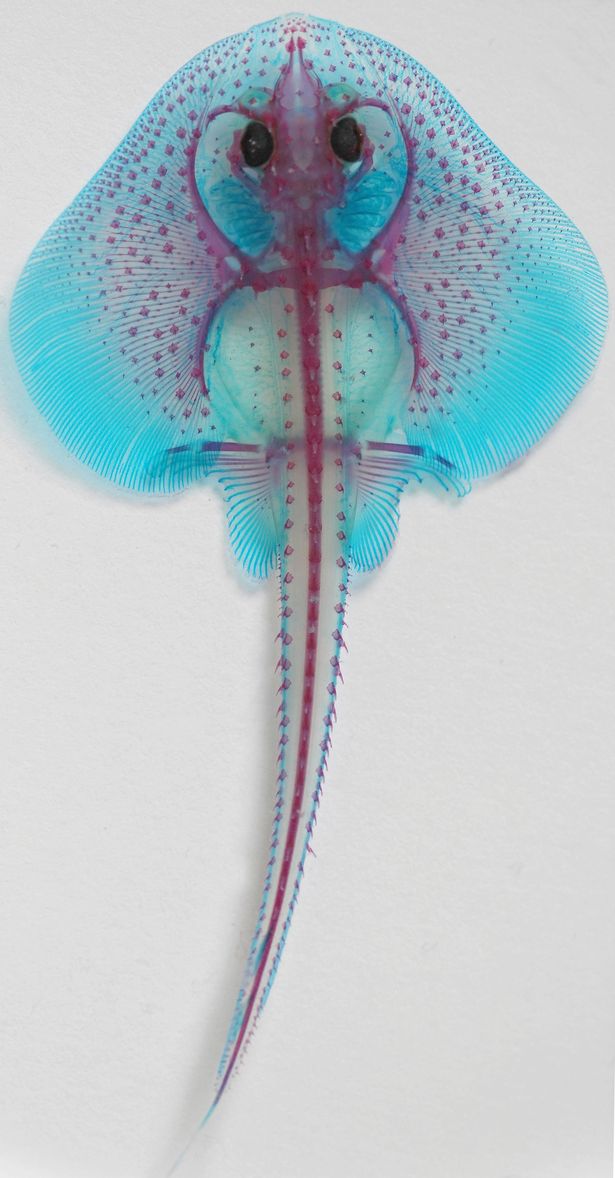
Scientists have shown that human limbs may have evolved from the same gene structures found in the gills of cartilaginous fish such as sharks, skates and rays.
Victorian era German anatomist Karl Gegenbaur proposed the idea a century ago but no fossil evidence came to light to back his claim.
The Daily Mail reports:

BYPASS THE CENSORS
Sign up to get unfiltered news delivered straight to your inbox.
You can unsubscribe any time. By subscribing you agree to our Terms of Use
Latest Video
The discovery could shed light on the origin of jawed vertebrates – the group of animals that includes humans.
Unlike other fish, cartilaginous fish have a series of skin flaps that protect their gills.
These flaps are supported by arches of cartilage, with finger-like appendages called branchial rays attached.
In 1878, German anatomist Karl Gegenbaur presented the theory that paired fins and eventually limbs evolved from a structure resembling the gill arch of cartilaginous fish.
However, nothing in the fossil record has ever been discovered to support this.

Now, researchers have reinvestigated Gegenbaur’s ideas using the latest genetic techniques on embryos of the little skate – a fish from the very group that first inspired the controversial theory 138 years ago.
They found striking similarities between the genetic mechanism used in the development of its gill arches and those in human limbs.
Scientists say it comes down to a critical gene in limb development called ‘Sonic hedgehog’, named after the video game character by a research team at Harvard Medical School.
The sonic hedgehog gene is thought to play role in the growth of digits on limbs, as well as the organisation of the brain. It’s even even been implicated in the development of some cancers, making it an important research topic.
The new study, published in the journal Development, shows the functions of the Sonic hedgehog gene in human limb development – dictating the identity of each finger and maintaining growth of the limb skeleton – are mirrored in the development of the branchial rays in skate embryos.

Lead author of the study Dr Andrew Gillis, from the University of Cambridge, said it shows aspects of Gegenbaur’s theory may in fact be correct, and provides greater understanding of the origin of jawed vertebrates, including humans.
‘Gegenbaur looked at the way that these branchial rays connect to the gill arches and noticed that it looks very similar to the way that the fin and limb skeleton articulates with the shoulder,’ he said.
‘The branchial rays extend like a series of fingers down the side of a shark gill arch.’
‘The fact that the Sonic hedgehog gene performs the same two functions in the development of gill arches and branchial rays in skate embryos as it does in the development of limbs in mammal embryos may help explain how Gegenbaur arrived at his controversial theory on the origin of fins and limbs.’
In mammal embryos, the Sonic hedgehog gene sets up the axis of the limb in the early stages of development.
Dr Gillis explained: ‘In a hand, for instance, Sonic hedgehog tells the limb which side will be the thumb and which side will be the pinky finger.’
In the later stages of development, Sonic hedgehog maintains outgrowth so that the limb grows to its full size.
To test whether the gene functions in the same way in skate embryos, Dr Gillis and his team inhibited Sonic hedgehog at different points during their development.
They found that if the gene was interrupted early in development, the branchial rays formed on the wrong side of the gill arch.
If the Sonic hedgehog gene was interrupted later in development, then fewer branchial rays formed.
However, the ones that did grow, grew on the correct side of the gill arch, showing that the gene works in a remarkably similar way here as it does in the development of limbs.
‘Taken to the extreme, these experiments could be interpreted as evidence that limbs share a genetic programme with gill arches because fins and limbs evolved by transformation of a gill arch in an ancestral vertebrate, as proposed by Gegenbaur,’ Dr Gillis said.
‘However, it could also be that these structures evolved separately, but re-used the same pre-existing genetic programme.
‘Without fossil evidence this remains a bit of a mystery -there is a gap in the fossil record between species with no fins and then suddenly species with paired fins – so we can’t really be sure yet how paired appendages evolved.’
‘Either way this is a fascinating discovery, because it provides evidence for a fundamental evolutionary link between branchial rays and limbs.’
Paired appendages, such as arms and hands in humans, are one of the key anatomical features that distinguish jawed vertebrates from other groups. Dr Gillis said: ‘There is a lot of interest in trying to understand the origins of jawed vertebrates, and the origins of novel features like fins and limbs.
‘What we are learning is that many novel features may not have arisen suddenly from scratch, but rather by tweaking and re-using a relatively small number of ancient developmental programmes.’


